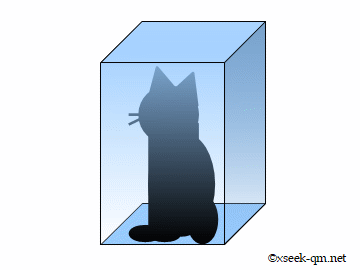This page provides an overview of the famous Schrödinger’s cat thought experiment—a cornerstone paradox of quantum mechanics.

In 1927, Niels Bohr (with contributions from Werner Heisenberg) outlined these key principles of quantum mechanics:
Bohr never specified exactly where the quantum-classical boundary lies; in debates with Einstein, he even suggested that a box of photons remains a quantum system.
This framework became known as the Copenhagen Interpretation—named after the Niels Bohr Institute in Copenhagen, Denmark—and remains the dominant view today.
In 1932, John von Neumann and Eugene Wigner extended the Copenhagen view with these refinements:
This extension is called the Von Neumann-Wigner Interpretation.
Dissatisfied with the necessity of consciousness, Erwin Schrödinger introduced in 1935 a famous thought experiment—Schrödinger’s cat—to expose potential flaws.
A cat is placed in a sealed box alongside a detector for radioactive decay that, if triggered, releases poison gas. According to quantum mechanics, the radioactive isotope exists in a superposition of “decayed” and “undecayed” states, so its actual state—and thus whether the cat is alive or dead—remains undefined until observed.
Under the Von Neumann-Wigner view, consciousness itself collapses the wave function. Therefore, until someone opens the box and checks, the cat exists in a superposition of “alive” and “dead”—the essence of the paradox.
Schrödinger’s point was that imagining a cat both alive and dead simultaneously contradicts common sense, highlighting a potential issue with attributing collapse to consciousness.

Copenhagen Interpretation: Since the wave function is purely informational, the paradox is merely apparent and poses no true conflict.
Many-Worlds Interpretation (Everett, 1957): Each outcome—alive or dead—occurs in its own branch of the universe. To date, no experiment has definitively confirmed this picture.
Which interpretation best describes reality remains an open question—future advances may ultimately resolve the debate.
© 2004-2014 xseek-qm.net
広告


